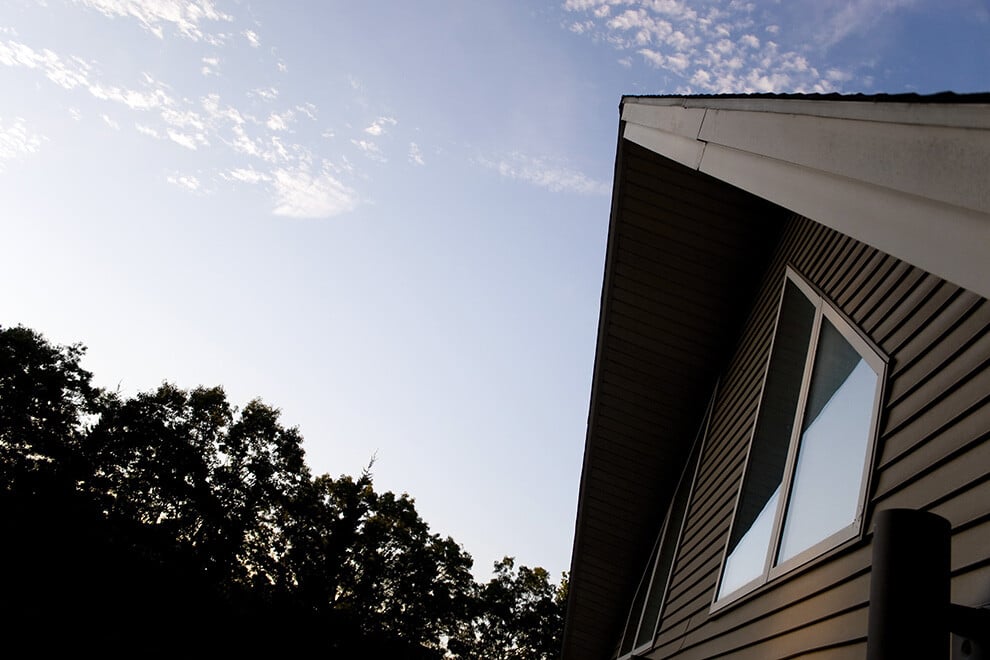Search for topics or resources
Enter your search below and hit enter or click the search icon.
April 14th, 2025
3 min read

When it comes to insulating complex roof structures, few are more challenging than a 4/12 hip roof with drywall already installed on the ceiling. In a recent video, Tom from Indiana Spray Foam breaks down the common issues contractors face in these scenarios—and how spray foam insulation provides a lasting, energy-efficient solution.
If you’re a homeowner or builder working with a hip roof and traditional fiberglass insulation, you may want to reconsider your approach. Here’s what you need to know about the limitations of fiberglass in tight roof corners and why spray foam is the smart choice for sealing these hard-to-reach areas.
A hip roof is a type of roof where all sides slope downwards to the walls, usually with a gentle pitch. A 4/12 hip roof means the roof rises 4 inches for every 12 inches it runs horizontally—resulting in a relatively shallow angle. This design is common for its visual appeal and durability in high-wind regions, but it presents a significant challenge when it comes to insulation.
In homes where drywall is installed on the ceiling beneath a 4/12 hip roof, there’s limited access to the tight corners where the roof meets the wall—especially once the ceiling joists and framing are in place.
“These corners here, this one, that one—you just can’t reach them once drywall goes in,” Tom explains in the video. “You’ve got your two-by-eights and ceiling joists in the way. It’s physically impossible to access these corners after the fact.”
This becomes a serious problem if fiberglass insulation is used during construction. While it may be installed before the drywall goes up, fiberglass is highly susceptible to a range of issues:
• It sags or deteriorates over time, especially in awkward spaces where it can’t be fully supported.
• Rodents and pests—like squirrels, birds, and mice—can chew it up and displace it.
• Moisture problems can develop if the fiberglass traps humidity, which can’t properly escape or dry.
Once the drywall is installed, there’s no practical way to remove or inspect the insulation in these corners. If it fails—or worse, if it wasn’t installed well to begin with—those areas become permanent weak spots in your home’s thermal envelope.
Spray foam insulation offers a much better solution for tight roof assemblies like 4/12 hips. Its ability to expand and fill cavities ensures complete coverage, even in corners where traditional batts simply won’t reach.
Tom recommends a proactive approach during construction: “I suggest taking these corners, cutting this square of drywall out, stuff our soffits, and spray all that closed so no air movement is in these corners of these hips.”
By opening up small sections of the drywall, the Indiana Spray Foam team can access previously unreachable voids. Once the area is exposed, they:
1. Seal soffit vents (if necessary) to prevent unwanted airflow.
2. Apply closed-cell spray foam directly into the hip corners, ensuring a tight seal.
3. Continue spray foam application up the roofline, creating a continuous insulation and air barrier from the wall plate to the ridge.
This not only improves energy efficiency but also strengthens the building envelope against air infiltration and moisture issues.
One of the biggest insulation challenges in any roof assembly is controlling air movement. Gaps in insulation—especially in corners—create pathways for unconditioned air to enter or escape. This can lead to:
• Increased heating and cooling costs
• Hot and cold spots in living spaces
• Moisture buildup in the roof deck or attic
• Shorter HVAC system lifespan due to overwork
By insulating these vulnerable corners with spray foam, homeowners can significantly reduce air leakage and improve indoor comfort.
If the drywall is already in place, all hope isn’t lost. In many cases, Indiana Spray Foam can still access problem areas by carefully cutting out targeted sections of drywall, applying foam, and repairing the ceiling afterward. While not as seamless as pre-construction access, it’s still far better than leaving ineffective fiberglass in place.
However, the best results come when insulation is considered early in the building process. Spray foam gives you a one-and-done solution that lasts the life of the home without sagging, shifting, or deteriorating like other materials.
At Indiana Spray Foam, we specialize in tackling tricky insulation problems—especially in roof assemblies that other contractors shy away from. Our experience with hip roofs, cathedral ceilings, and enclosed cavities gives us the tools and expertise to deliver airtight, energy-efficient results, no matter how complex the job.
We believe that every square foot of your home deserves quality insulation. And that includes those hidden corners that are easy to overlook but critical to your home’s overall performance.
If you’re building or remodeling a home with a hip roof, don’t leave your insulation up to chance. Reach out to the team at Indiana Spray Foam and let us help you make the smart, energy-efficient choice with spray foam.
Contact us today for a free consultation or estimate—and don’t forget to subscribe to our YouTube channel for more videos from the Indiana Spray Foam crew.